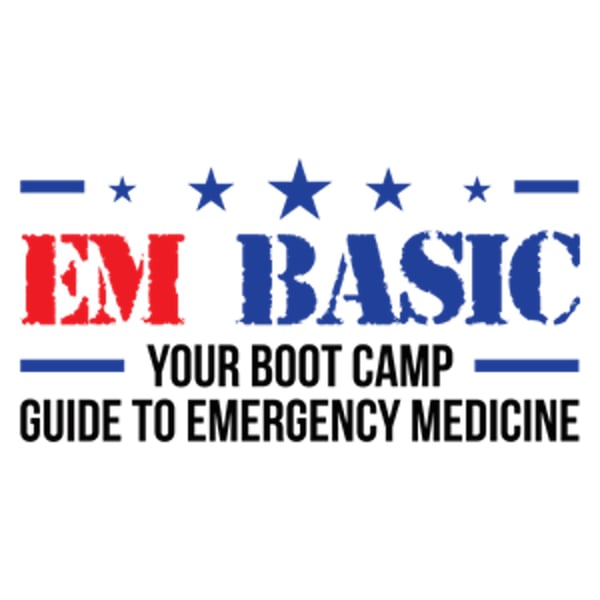Non-invasive Ventilation
EM Basic
EM Basic LLC
4.6 • 665 Ratings
🗓️ 25 September 2012
⏱️ 19 minutes
🧾️ Download transcript
Summary
Non-invasive ventilation is a great technique that we can use for just about any patient who is short of breath. We can use it to avoid intubation in our patients who are close to respiratory failure. In this episode, we'll talk about how non-invasive ventilation works, which patients we can use it on, and how to actually make it happen. For that last part, I'll borrow from a post by Seth Treuger at his blog mdaware.org on how to start non-invasive ventilation quickly while keeping it comfortable for the patient.
Transcript
Click on a timestamp to play from that location
| 0:00.0 | This is Steve Carroll and you're listening to the Em Basic Podcast. |
| 0:05.1 | For today's episode, we're going to review how to use non-invasive ventilation in the ED. |
| 0:10.1 | When we say non-invasive ventilation, we are usually talking about CPAP and BIPAP, so that's what we'll focus on. |
| 0:17.8 | Non-invasive ventilation is a powerful tool that we can use to help our patients with various |
| 0:23.0 | respiratory disorders. In some cases, it can help us avoid inhibition, which is always a good thing |
| 0:29.2 | for our patients. As always, this podcast doesn't represent the views or views of the Department |
| 0:33.7 | Defense, the U.S. Army, or the Ford Hood Post Command. So let's get started. |
| 0:38.7 | First, let's start off by talking about the definition of non-invasive ventilation. |
| 0:43.3 | This is a term that encompasses many different devices and brand names, but we're going to focus |
| 0:48.7 | on two specific modes, CPAP and bi-pap. C-PAP stands stands for continuous positive airway pressure, while BIPAP stands for |
| 0:58.0 | bi-level continuous positive air weight pressure. Technically the term BIPP is a proprietary mode of |
| 1:04.6 | ventilation that is trademarked by a particular company, but it is used so frequently, it may as well not be. For both of these |
| 1:12.6 | modes, the patient is provided with positive pressure and oxygen via tight-fitting face mask. |
| 1:19.8 | The machine basically blows a large volume of oxygen into the face mask. This actually helps |
| 1:26.1 | the patient breathe easier because it takes away a lot of |
| 1:29.5 | their work of breathing. When you have the patient on non-invasive ventilation, they don't have to work |
| 1:35.1 | as hard to breathe because of the positive pressure that we provide. Let's briefly talk about how |
| 1:40.7 | non-invasive works, because you may be asked about this on a shift. |
| 1:45.5 | Non-invasive ventilation works by improving the laminar flow of air, which stents open the smaller |
| 1:51.3 | airways. This causes decreased adelectasis of the lung tissue, which improves pulmonary |
| 1:57.4 | compliance, and reduces the patient's work of breathing. |
| 2:05.7 | In regards to the patient with pulmonary edema, you might think that the added pressure from non-invasive ventilation just blows the fluid out of the lungs, but that's actually not |
... |
Please login to see the full transcript.
Disclaimer: The podcast and artwork embedded on this page are from EM Basic LLC, and are the property of its owner and not affiliated with or endorsed by Tapesearch.
Generated transcripts are the property of EM Basic LLC and are distributed freely under the Fair Use doctrine. Transcripts generated by Tapesearch are not guaranteed to be accurate.
Copyright © Tapesearch 2025.

